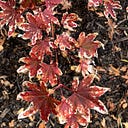Vedic Etymology -A Glance
Some notes on Nirukta
Came across an Interesting talk on Vedic Etymology by Dr Gowri Mahulikar. A few things interesting notes that I could digest.
Nirukta is one of the 6 tools or Vedangas in order to facilitate the understanding of Vedas. Interestingly 4 of the 6 vedangas are related to ‘words’ and 2 of them Kalpa and Jyotisha more of ‘mathematics’.
Shiksha deals with phonetics and aptly assosciated with the nose of the Veda purusha.. Niruktam etymology associalted with ear.. Vyakarana Grammar the mouth and Chandas the foot work and carrier of the mantras.
Etymology of Niruktam.. Kasmaat Niruktam?
Nirukta is that which has been expounded in detail without bias.. nis shesha.. nir apeksha uktam..
Some words have an easy etymology match pratyaksha and Some of them are indirect and not so obvious. paroksha..ati paroksha..
In case of multiple matches and possibilities, importance of ‘meaning match’ over ‘sound match’. For instance ‘vadhu’ meaning bride is derived from ‘vaah’ meaning ‘to carry’ and NOT from ‘vadh’ meaning ‘to kill’.
Some of the interesting transformations of root sounds.
a)Juxtaposition of sounds..
‘pa’ and ‘ka’ get swapped. Sage Kashyapa’s name derives from ‘pashyaka’ as he was a ‘seer’ ‘pashya’.
From ‘himsa’ juxtaposed we get ‘simha’ ..
b)Borrowed letters.. ‘hamsa’ with a borrowed ‘m’ comes from ‘hasi’ meaning smile as smile is metaphorically ‘white’
c)Sound modifications.. ‘vadhu’ from ‘vaah’
Some interesting derivations
shaka kasmaat? Why is branch called shaka?
that which sleeps in the sky.. shayathi kha.. sha ka
vruksha kasmaat? Why is tree called vruksha?
that which covers the earth.. vrutti kshama .. vru ksha
taru kasmaat? Why is a tree called taru?
that which helps in liberation.. taarayaam
hiranmaya kasmaat.. Why is it called for Gold? Hru is to steal
That which robs wonder and desire.. shape can be robbed to another form..
Nighantu
According to commentary by Yaska, Nighantu was a collection of rare or difficult words gathered by earlier sages for easier understanding of Vedic texts.
It had 6 chapters covering synonymns, difficult homonymns and dieties. The dieties were subject matter of the mantras and spanned from terresterial, atmosphrical and celestial.
Homonymns
Sentence context needed to understand the meaning of the word.
From Sindhu meaning waterbody, we have syanda which could mean horse or salt. Horse as a byproduct during churning of ocean.
REFERENCES
Nirukta — The Etymological Studies in the Veda by Prof. Gauri Mahulikar
https://en.wikipedia.org/wiki/Nighantu
https://archive.org/details/in.ernet.dli.2015.553626
Lakshman swaroop && Chajju shastri
